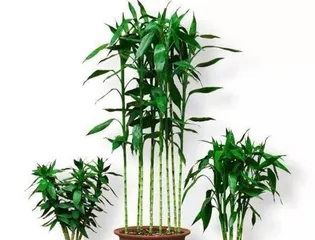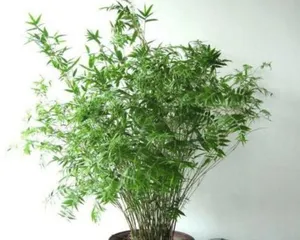Cultivation Methods for Calamondin Bonsai: Ensuring Healthy Growth

Calamondin bonsai, also known as small golden tangerine, is a plant suitable for indoor potting. It not only has ornamental value but also purifies the air. However, to ensure the healthy growth of the calamondin bonsai, we need to pay attention to some cultivation methods. This article will provide a detailed introduction on how to care for a calamondin bonsai tree.
I. Choosing the Right Potting Soil
The soil for calamondin bonsai should be kept moist while also being well-draining. It is best to use a potting mix that is a combination of nutrient-rich river sand and garden soil with good drainage.

II. Proper Watering
Calamondin bonsai needs to maintain moderate humidity, but it should not be overwatered. It is best to water when the soil is dry, watering thoroughly each time, but avoid letting water accumulate at the bottom of the pot.
III. Maintaining Suitable Temperature
The ideal temperature for calamondin bonsai growth should be between 18°C and 24°C. Avoid exposing it to high or low-temperature environments.
IV. Controlling Light Exposure
Calamondin bonsai is a sun-loving plant, but it also needs moderate light exposure, as excessive sunlight can damage the plant. It is recommended to place the plant in a sunny location but avoid direct sunlight.

V. Regular Pruning
Regular pruning of the calamondin bonsai can promote branching and lush growth, and maintain a good shape. It is best to prune in the spring, but be careful not to over-prune.
VI. Fertilization Techniques
Calamondin bonsai requires a moderate supply of nutrients. Apply organic or liquid fertilizer every two months. However, be careful not to over-fertilize to avoid damaging the plant.
VII. Pest and Disease Control
Calamondin bonsai is susceptible to pests and diseases, so prevention and treatment are necessary. It is recommended to periodically water the soil with a stronger fertilizer solution to improve the plant's disease resistance.
VIII. Repotting
Calamondin bonsai grows relatively fast, so it is recommended to repot it once every spring. At the same time, choose a pot of the appropriate size to ensure good plant growth.
IX. Avoid Excessive Handling
Calamondin bonsai needs time to adapt to a new environment, so do not move or rotate the plant frequently. Avoid causing excessive damage to the plant.
X. Acclimatization
Calamondin bonsai is highly adaptable, but it still needs time to acclimate to a new environment. After purchasing a calamondin bonsai, it is best to let it adapt to the new environment before proceeding with normal care.
XI. Avoiding Smoke and Dust Pollution
Calamondin bonsai needs to be kept clean to avoid adverse effects from pollutants such as smoke and dust.
XII. Monitoring Air Humidity
Calamondin bonsai needs to maintain moderate humidity. You can periodically mist the plant with a spray bottle, or place a hygrometer near the pot.
XIII. Reasonable Pairing
Calamondin bonsai can be paired with other potted plants to make the indoor environment more beautiful. However, it is important to choose similar plants to maintain the overall harmony of the plant arrangement.
XIV. Adapting to Seasonal Changes
Calamondin bonsai requires different care methods in different seasons. For example, in winter, reduce watering and fertilization to avoid affecting the plant's growth.
XV. Regular Inspection
Calamondin bonsai needs regular inspections of its growth condition and for any signs of pests or diseases, so that timely measures can be taken for prevention and control.
As a plant suitable for indoor potting, calamondin bonsai requires us to pay attention to various aspects of its care. We should choose the right potting soil, control the suitable temperature, and water and fertilize appropriately. Only by doing so can we ensure the healthy growth of the calamondin bonsai and add more beauty to the indoor environment.